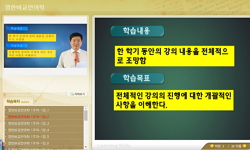In the second half of the 18th century, there were two different types of operas - Singspiel and Peking Opera - in Germany and China respectively. Although these two kinds of plays are formed in different cultural backgrounds, they are both comprehens...
http://chineseinput.net/에서 pinyin(병음)방식으로 중국어를 변환할 수 있습니다.
변환된 중국어를 복사하여 사용하시면 됩니다.
- 中文 을 입력하시려면 zhongwen을 입력하시고 space를누르시면됩니다.
- 北京 을 입력하시려면 beijing을 입력하시고 space를 누르시면 됩니다.
독일 징슈필(Singspiel)과 중국 경극(京劇)의 음악극 요소 비교연구 : <마술피리>와 <백사전>을 중심으로 = A Comparative Study on the Musical Dramatic Elements of Germany Singspiel and China Peking Opera : The case studies based on <Magic Flute> and <White Dictionary>
한글로보기https://www.riss.kr/link?id=T16655825
- 저자
-
발행사항
전주 : 전북대학교 일반대학원, 2023
-
학위논문사항
학위논문(박사) -- 전북대학교 일반대학원 , 음악학 성악 , 2023. 2
-
발행연도
2023
-
작성언어
한국어
- 주제어
-
발행국(도시)
전북특별자치도
-
형태사항
ix, 162 p. ; 26 cm
-
일반주기명
지도교수: 이은희
-
UCI식별코드
I804:45011-000000056537
- 소장기관
-
0
상세조회 -
0
다운로드
부가정보
다국어 초록 (Multilingual Abstract)
In the second half of the 18th century, there were two different types of operas - Singspiel and Peking Opera - in Germany and China respectively. Although these two kinds of plays are formed in different cultural backgrounds, they are both comprehensive plays with music as the main means of artistic expression. operas in the German Singspiel were based on Italian operas and influenced by the British Ballad operas and the French Opera buffa. lied was used as the composition elements of the arias and relied on large dialogues instead of the narrative. It gradually formed a form of music drama with local characteristics. Based on a variety of folk operas, Chinese Peking Opera has developed into China's "national opera" through the long-term practice of numerous artists on the stage. It has formed a set of standardized procedures in literature, performance, music, singing, instrumental music, facial makeup and other aspects of the performing art system organically combined with "singing, reading, acting and playing". This paper selects two representative works of Singspiel and Peking Opera - Mozart's The Magic Flute and Tian Han's The Legend of the White Snake, and uses the method of comparative musicology to analyze musicality elements of the two works from four aspects of script, music, dialogue and performance, and then discusses the similarities and differences between German Singspiel and Chinese Peking Opera in terms of artistic expression. To deepen the cultural understanding of these two different types of musical drama.
목차 (Table of Contents)
- I. 서론 1
- 1. 연구의 필요성과 목적 1
- 2. 연구문제 9
- 3. 연구의 범위 및 방법 10
- 4. 선행연구 검토 11
- I. 서론 1
- 1. 연구의 필요성과 목적 1
- 2. 연구문제 9
- 3. 연구의 범위 및 방법 10
- 4. 선행연구 검토 11
- II. 이론적 배경 16
- 1. 음악극의 일반적 특성 16
- 2. 독일 징슈필 <마술피리> 개요 17
- 1) 징슈필의 기원과 발전 18
- 2) 징슈필의 예술적 특징 20
- 3) <마술피리>의 음악극적 요소 25
- 3. 중국 경극 <백사전> 개요 28
- 1) 경극의 기원과 발전 28
- 2) 경극의 예술적 특징 30
- 3) <백사전>의 음악극적 요소 37
- III. <마술피리>와 <백사전>의 대본 39
- 1. <마술피리>의 대분 39
- 1) 등장인물 40
- 2) 음악극의 줄거리와 배경 41
- 2. <백사전>의 대분 46
- 1) 등장인물 48
- 2) 음악극의 줄거리와 배경 48
- 3. <마술피리>와 <백사전>의 대본 비교 51
- 1) 등장인물 51
- 2) 대본 특징 52
- IV. <마술피리>와 <백사전>의 음악구조 56
- 1. <마술피리>의 음악구조 56
- 1) 성악적 특징 56
- 2) 기악적 특징 57
- 3) <마술피리>의 음악구조 59
- 4) <마술피리>의 음악 형식 63
- 2. <백사전>의 음악구조 65
- 1) 경극의 창강(唱腔)과 판식(板式) 65
- 2) <백사전>의 음악구조 84
- 3) <백사전>의 문 ‧ 무장음악(文 ‧ 武場音樂) 97
- 3. <마술피리>와 <백사전>의 음악구조 비교 98
- 1) 음악과 연극의 관계 99
- 2) 음악 창작의 주체 100
- 3) 음악 구조의 차이 101
- V. <마술피리>와 <백사전>의 대화 103
- 1. <마술피리>의 대화 103
- 2. <백사전>의 대화 104
- 3. <마술피리>와 <백사전>의 대화 비교 107
- 1) 언어 기초 107
- 2) 표현형식 108
- VI. <마술피리>와 <백사전>의 음악적 이미지 특징 110
- 1. <마술피리>의 음악적 이미지 특징 110
- 1) 밤의 여왕의 이미지 특징 110
- 2) 파미나의 이미지 특징 115
- 3) 타미노의 이미지 특징 120
- 4) 파파게노 이미지 특징 127
- 5) 자라스트로의 이미지 특징 131
- 2. <백사전>의 음악적 이미지 특징 134
- 1) 백소정(白素貞)의 이미지 특징 134
- 2) 허선(許仙)의 이미지 특징 141
- 3) 법해(法海)의 이미지 특징 144
- 4) 소청(小青)의 이미지 특징 146
- 3. <마술피리>와 <백사전>의 이미지 특징 비교 148
- 1) 캐릭터에 따른 음성특징 148
- 2) 발성법의 차이 150
- 3) 종합적인 무대 예술 151
- VII. 결론 152
- 참고문헌 158












